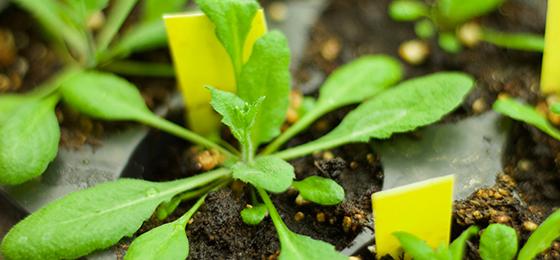Antibacterial weapons from the phyllosphere
Using new methods, researchers at ETH Zurich have discovered promising candidates for new medicines in surprising locations.
Portrait / project description (completed research project)
Largely unexplored habitats
Many antibiotics used nowadays were developed on the basis of natural substances that produce bacteria themselves to fend off other bacteria. These substances were searched for and found primarily in the soil. But in addition to these, nature offers a huge variety of microbes that represent a major potential source of active substances that remains almost completely untapped. These include, for example, bacteria on plants or in marine organisms. In each of these habitats, the bacteria compete for limited food supplies. This means that they produce a wide variety of substances in order to prevail over, and defend themselves against, other bacteria.
But not all bacteria are equally active in producing biologically active substances. A team headed by Jörn Piel and Julia Vorholt from ETH Zurich has therefore developed and used bioinformatic methods for ascertaining – directly from the bacterial genetic information – whether an organism might be capable of producing substances with effective antibiotic properties. And, if this is the case, the search tools assess whether these are potential innovative substances or whether they are already known. This is extremely important for antibiotic research, because it searches for new compounds with mechanisms of action that differ significantly from those of existing drugs – and therefore may be able to overcome existing forms of antibiotic resistance.
Several antibiotics with innovative chemical structures discovered
Jörn Piel and Julia Vorholt have initially identified hundreds of bacterial species, including on leaf surfaces, in plant roots and marine sponges. In other studies, they have isolated substances produced by these bacterial species and tested them for their chemical and pharmacological properties. As a result, they have discovered a whole range of antibiotic substances with previously unknown chemical structures. These include a substance, called macrobrevin by the researchers and produced by bacteria, that colonise the leaf surface of thale cress, a wild plant that is widespread in Europe.
For some of the most promising newly discovered substances, the scientists then developed techniques that allow them to be produced synthetically. Naturally produced active substances are often present only in small quantities in environmental bacteria, which poses a major obstacle to further research on drug development, which requires extensive additional tests that go well beyond the initial discovery. Several substances have now been subjected to these tests, and further candidates are likely to follow, since the project has impressively shown that nature can still offer many new antibiotics in widely differing locations. The newly developed methods will prove helpful in the systematic search for these substances.
November 2021
Original title
Ecosystem- and genome-guided antibiotic discovery

